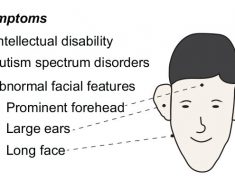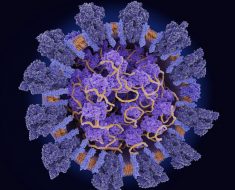
Researchers from Children’s Hospital of Philadelphia (CHOP) found disparities in the completion of follow-up concussion care, particularly among pediatric patients who are publicly insured and identify as Black, suggesting barriers to care exist.
The findings, recently published in the Journal of Head Trauma Rehabilitation, will help inform research aimed at addressing disparities in concussion care across socioeconomic groups.
Concussions are a major public health issue, with nearly 2 million occurring annually in children and adolescents. While recovery times vary due to a variety of factors, both early detection and adherence to follow-up guidance on post-injury activity positively affect long-term outcomes, as well as recovery time.
Yet access to care, and the ability to complete follow-up care recommendations, is not equally distributed among all concussion patients, especially those experiencing socioeconomic disadvantages. This study was designed to help determine where disparities exist in concussion care, with an emphasis on determining which demographic groups may be most at-risk for health care inequities.
In this retrospective study, the researchers reviewed medical records of children seen in CHOP primary care clinics to determine whether pediatric concussion patients adhered to providers’ follow-up recommendations and continued care until doctors cleared them to return to full activity. The study evaluated variations in patients’ adherence to follow-up recommendations by analyzing data available in the medical record, including race, ethnicity, insurance, age, sex, how the patients were injured and whether the patient sustained repeat head injuries.
The study found that out of 755 total patients, non-Hispanic black patients and publicly insured or self-paying patients were less likely to complete follow-up recommendations (70.6% for both of those groups) compared with non-Hispanic White patients and privately insured patients (83.5% and 82.9%, respectively). After adjusting for age, sex, injury mechanism, and repeated injuries, non-Hispanic black patients were more than 50% less likely to complete follow-up care recommendations and publicly insured patients were 40% less likely to do so compared to their non-Hispanic white and privately insured peers, respectively.
“We know from prior research that patients who are unable to adhere to concussion care recommendations, specifically those around activity and active rehabilitation strategies, may have longer recovery times and worse symptoms over time,” said senior study author Daniel J. Corwin, MD, MSCE, Assistant Professor of Pediatrics at the Perelman School of Medicine at the University of Pennsylvania and Emergency Department Lead of the Minds Matter Concussion Program at CHOP.
“This study provides us with a basis to explore the individual- and system-level barriers that may prevent adherence to care, which ultimately will inform how we provide targeted approaches and establish more equitable care to reduce disparities among pediatric concussion patients.”
To help address these disparities, researchers plan to analyze electronic health records of patients seen within the CHOP network and evaluate the implementation of primary-care based interventions in urban and suburban practices.
The goal is to facilitate accurate concussion diagnosis and management as well as identify those in need of specialist referral. Further study will analyze school re-entry data after concussion from the BrainSTEPS program of the Pennsylvania Departments of Health and Education, while also leveraging partnerships with with urban schools and sports programs to improve education and access to concussion care.
More information:
Fairuz N. Mohammed et al, Disparities in Adherence to Concussion Clinical Care Recommendations in a Pediatric Population, Journal of Head Trauma Rehabilitation (2022). DOI: 10.1097/HTR.0000000000000823 . journals.lww.com/headtraumareh … ion_Clinical.39.aspx
Journal information:
Journal of Head Trauma Rehabilitation
Source: Read Full Article





